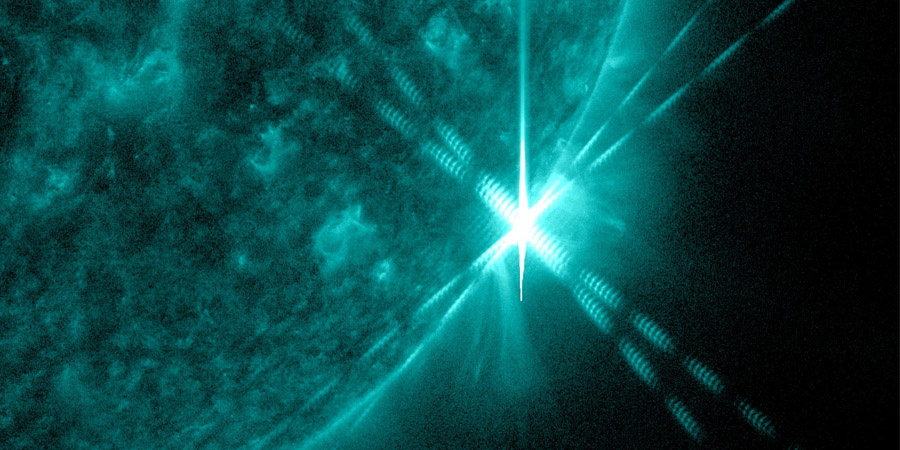M7.3 and X2.2 solar flares
Wednesday, 20 April 2022 10:33 UTC

With sunspot regions 2993 and 2994 we have two formidable sunspot regions on the earth-facing solar disk. These regions are fairly stable but did loose some magnetic complexity since they first appeared on the east limb. C and even M-class flares remain possible from these sunspot regions but it is departing sunspot region 2992 that has been stealing the show today. First it produced an M7.3 (R2-moderate) solar flare that peaked at 01:36 UTC which was quickly followed by the strongest solar flare of the current Solar Cycle thus far: X2.2 (R3-strong) at 03:57 UTC.
The M7.3 solar flare was fairly impulsive and a minor coronal mass ejection was ejected into space but due to the location of sunspot region 2992 at the west limb, the plasma cloud is of course aimed away from Earth. Today's highlight (at the time of writing at least!) was of course the powerful X2.2 solar flare which is the strongest solar flare since the X8.2 solar flare back in September 2017.
This eruption was also fairly impulsive (short in duration) however it but did launch a more powerful coronal mass ejection into space. As we can see on the images below courtesy of Solardemon and SOHO/LASCO this coronal mass ejection is just like the M7.3 event also not aimed at our planet. Solar proton levels remain at background levels. Unless another significant solar flare occurs the proton levels will likely remain below the S1 storm level.
Sunspot region 2992 remains active behind the west limb and is pushing the flux regularly up into the upper C-class range but any eruptions from there are unlikely to be aimed at Earth. All eyes back to sunspot regions 2993 and 2994 as more flares can come from these regions depending on how they develop.
Today's X2.2 solar flare is the strongest solar flare of the current Solar Cycle thus far. It peaked at 03:57 UTC and came from sunspot region 2992 which is rounding the western limb. The eruption was fairly impulsive and the resulting CME is not earth-directed. pic.twitter.com/Aq38bXuFnA
— SpaceWeatherLive (@_SpaceWeather_) April 20, 2022
Thank you for reading this article! Did you have any trouble with the technical terms used in this article? Our help section is the place to be where you can find in-depth articles, a FAQ and a list with common abbreviations. Still puzzled? Just post on our forum where we will help you the best we can!
Latest news
Latest forum messages
Support SpaceWeatherLive.com!
A lot of people come to SpaceWeatherLive to follow the Sun's activity or if there is aurora to be seen, but with more traffic comes higher server costs. Consider a donation if you enjoy SpaceWeatherLive so we can keep the website online!

Space weather facts
| Last X-flare | 2025/03/28 | X1.1 |
| Last M-flare | 2025/04/22 | M1.3 |
| Last geomagnetic storm | 2025/04/21 | Kp5+ (G1) |
| Spotless days | |
|---|---|
| Last spotless day | 2022/06/08 |
| Monthly mean Sunspot Number | |
|---|---|
| March 2025 | 134.2 -20.4 |
| April 2025 | 124.6 -9.6 |
| Last 30 days | 121.2 -9.9 |


